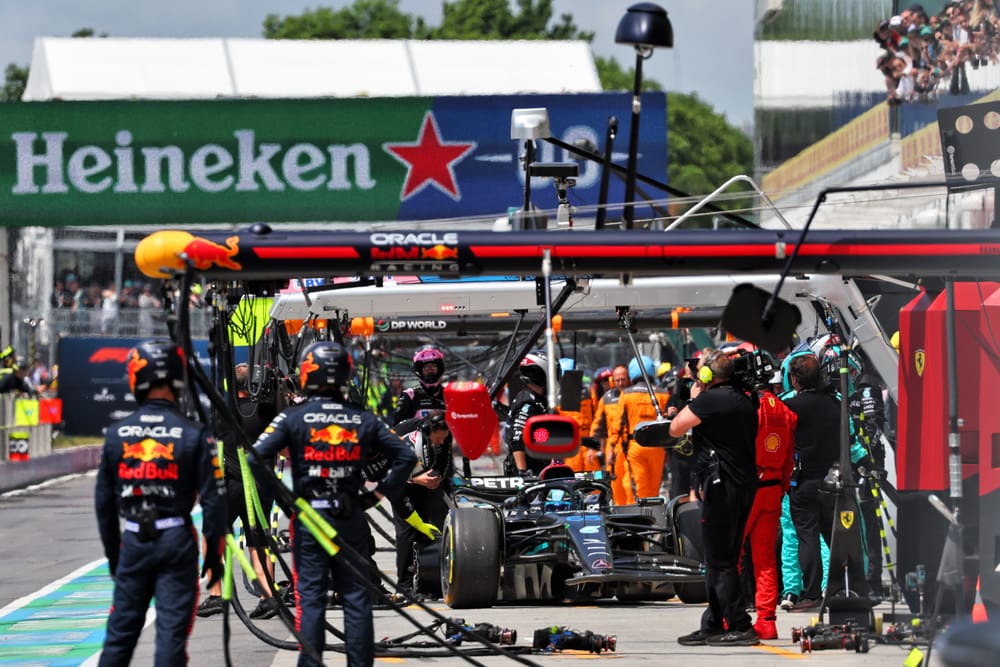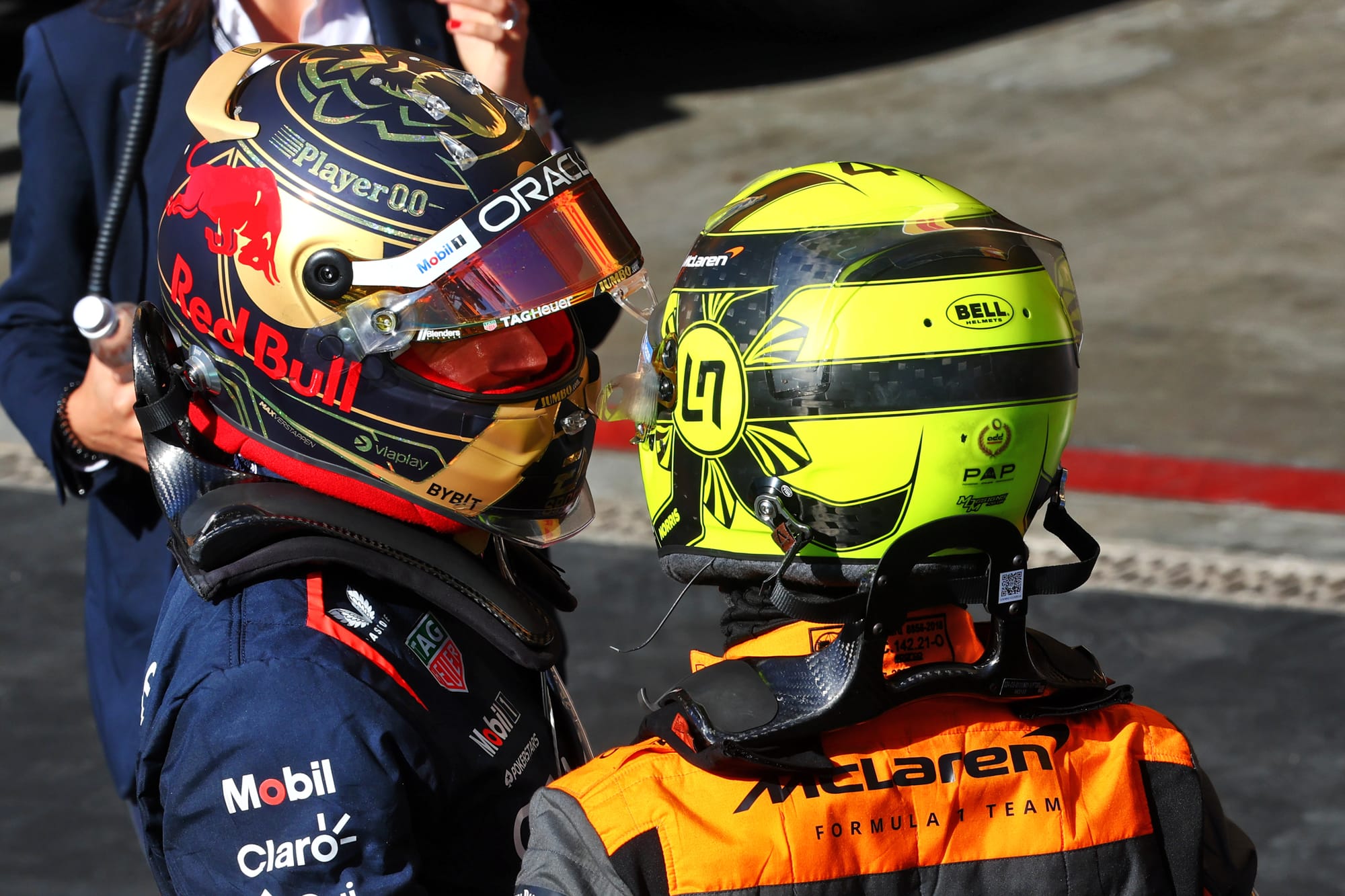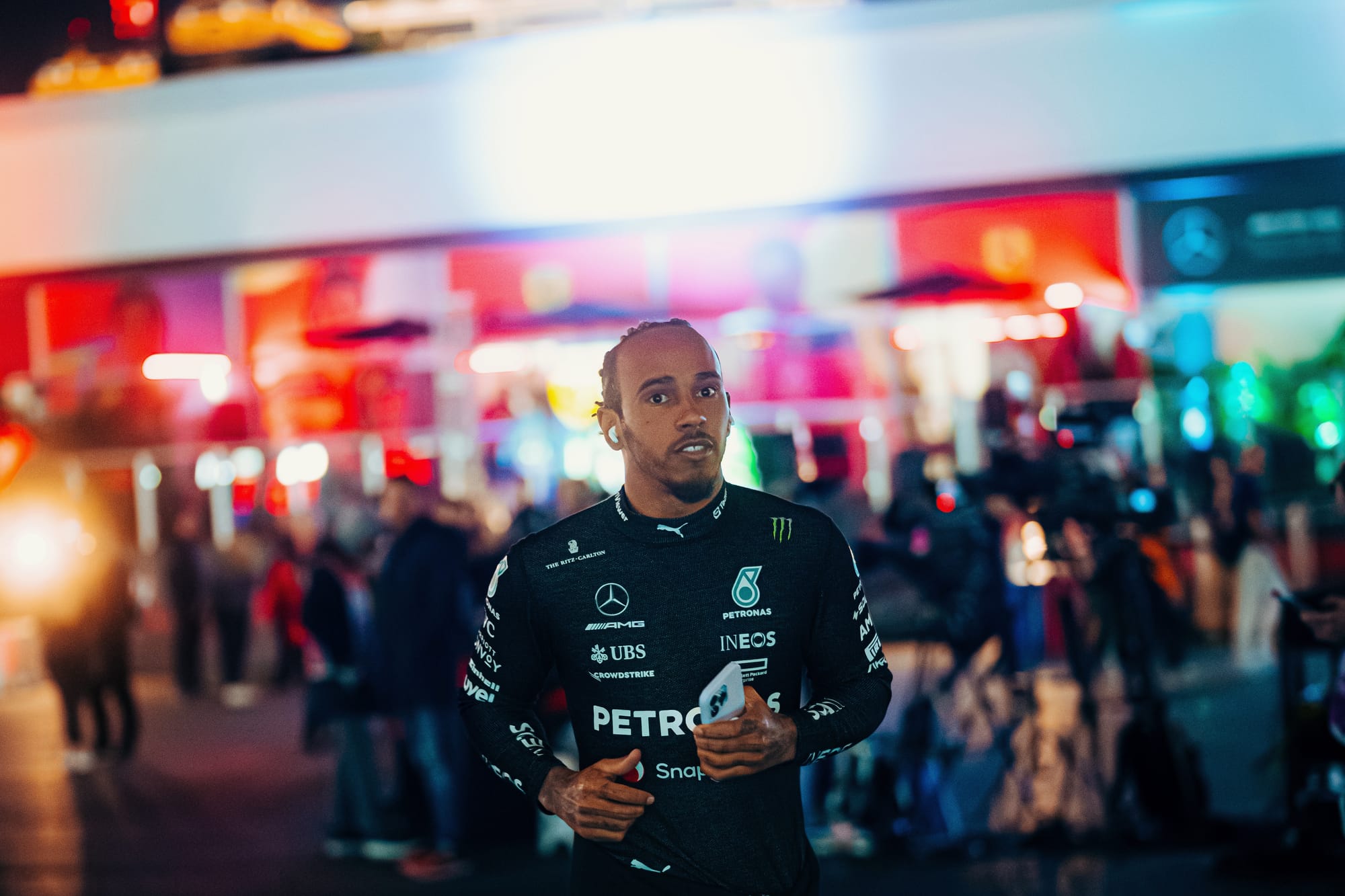Up Next

“The pace has been really great, but the results have been dreadful” was Mercedes driver George Russell’s summary of his 2023 Formula 1 season.
That was in keeping with the phraseology he used with increasing regularity in what he called an “awful” season during which “results kept slipping through our fingers”. So what went wrong?
You can legitimately call Russell’s year the worst of his five campaigns in F1. In terms of outright results, clearly it was superior to his three Williams years but considering the expectations and team-mate Lewis Hamilton’s overall advantage, it’s a reasonable claim.
It wasn’t that Russell was bad in 2023 because he still had a good year, as being ranked ninth in The Race’s Top 10 demonstrates, it just wasn’t as strong as anticipated.
Points scored can be an unreliable witness, but Russell’s return of 175 points and eighth in the world championship compared to Hamilton’s 234 and third is telling. Whereas last season they were separated by 35 points in Russell’s favour, this suggests he regressed.
However, one area where Russell was just as impressive as in 2022 was in qualifying trim. Hamilton is statistically the greatest qualifier in F1 history, but he and Russell were evenly-matched in terms of how often they each outqualified the other. Where a fair comparison can be made, Russell actually had a slender average advantage of 0.018s. So his assertion that the pace was great stands up.
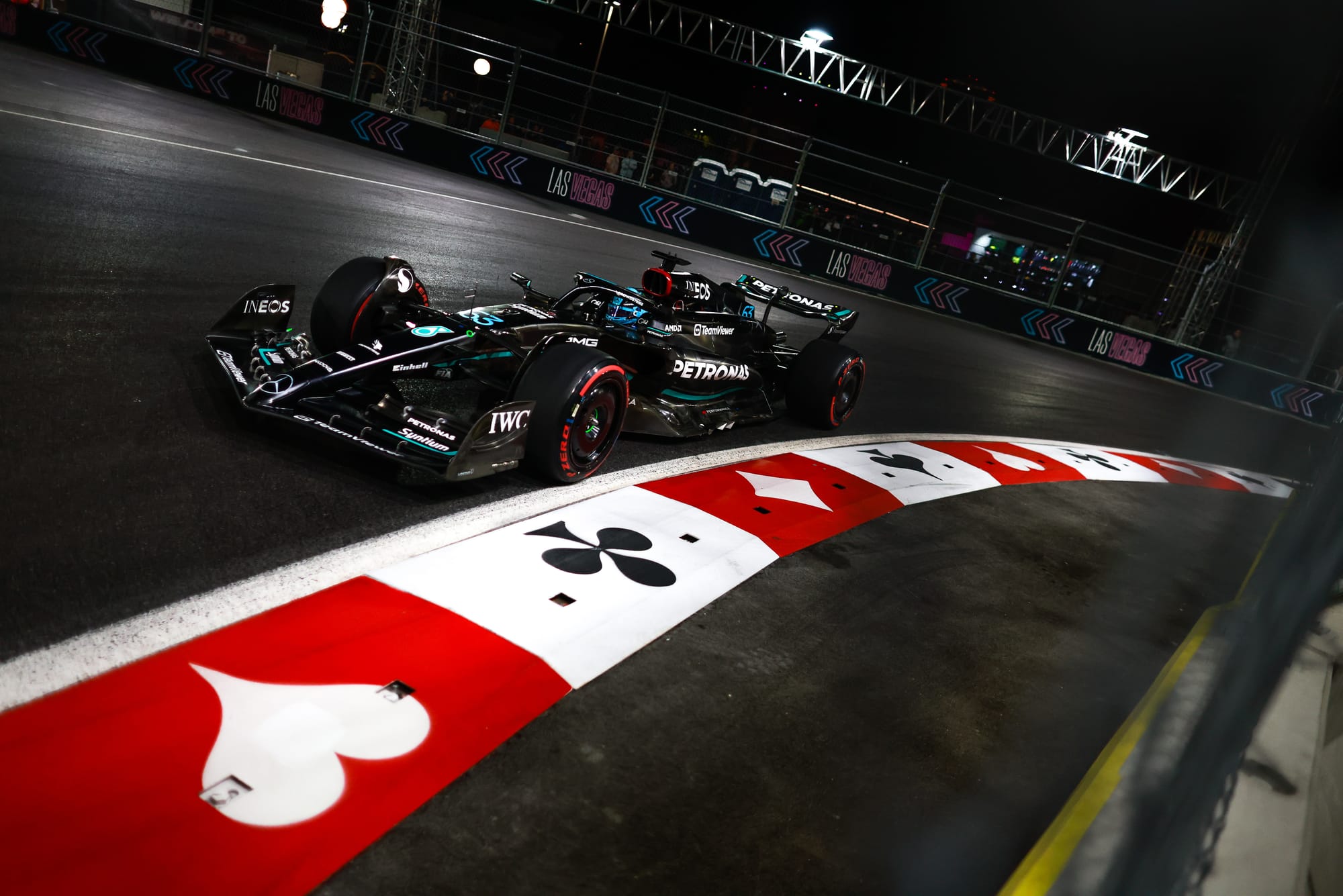
Before delving into why that didn’t translate into similar results, it’s important to note that the capricious characteristics of the Mercedes W14 clouds the issue. The car could be quick, but it could also be all over the place and often confounded the team with wild performance swings even across individual race weekends.
Untangling a driver’s performance from such vagaries is not straightforward, although as Hamilton faced the same problems and is the primary comparison point that cancels out much of the effect.
As Russell regularly pointed out, the problem was that his performance didn’t dependably translate into the results it should have done. Russell suggests that the conversion rate of opportunity to results was approaching 100% last year, but closer to 50/50 in 2023.
Russell's 2023 in review
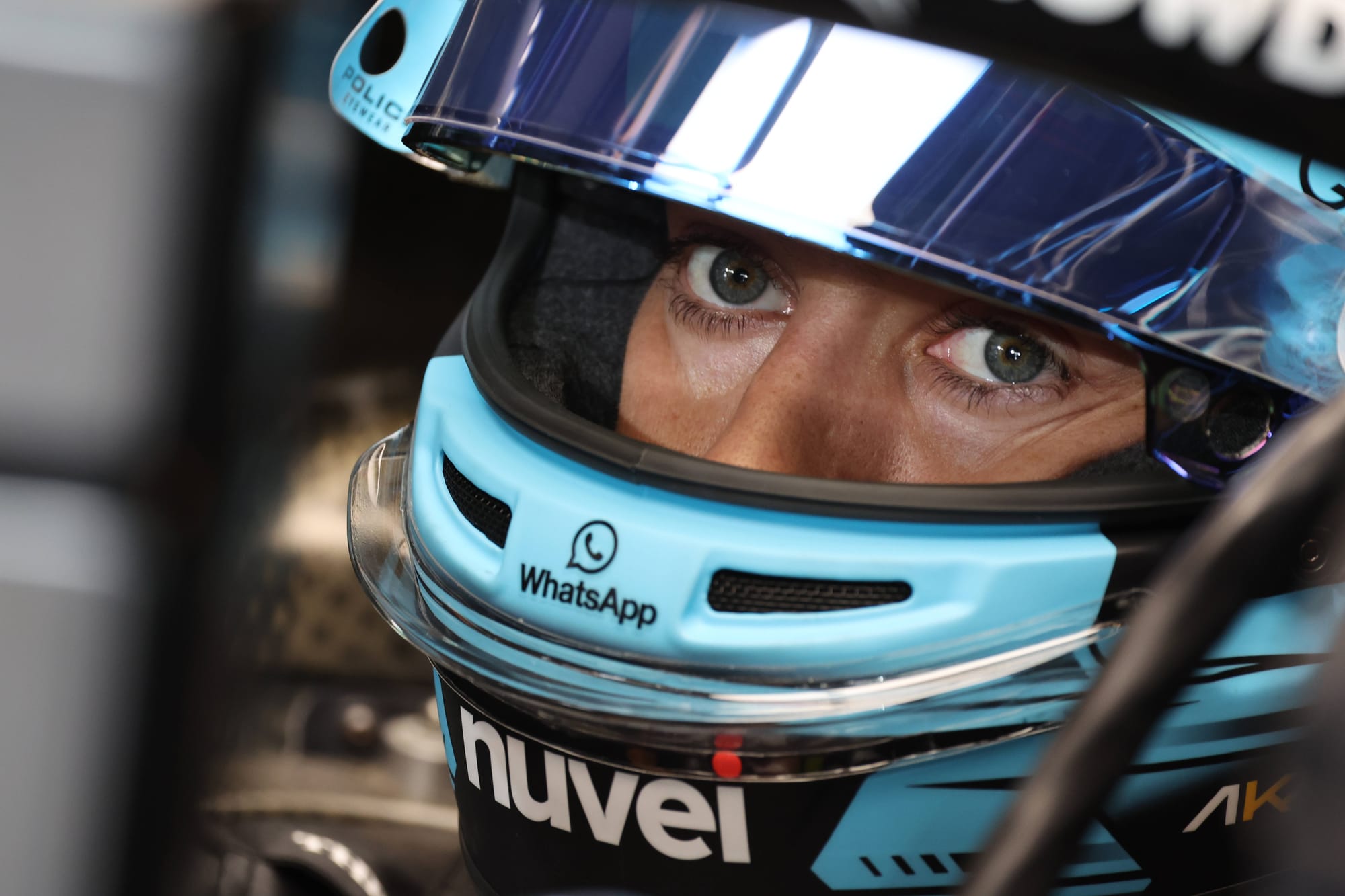
The season started well. In Bahrain he was solid but slower than Hamilton. He finished seventh, two places behind his team-mate, having been passed by Aston Martin driver Lance Stroll. He followed that up with a strong run to fourth in Jeddah, where he was the quicker Mercedes driver.
Then came the Australian Grand Prix, which was one of Russell’s standout weekends. This was the first event in which the result diverged dramatically from what it should have been as Russell led early on, then made a pitstop under the safety car that then turned into a red flag. That dropped him to seventh and he retired from fourth with a power unit problem.
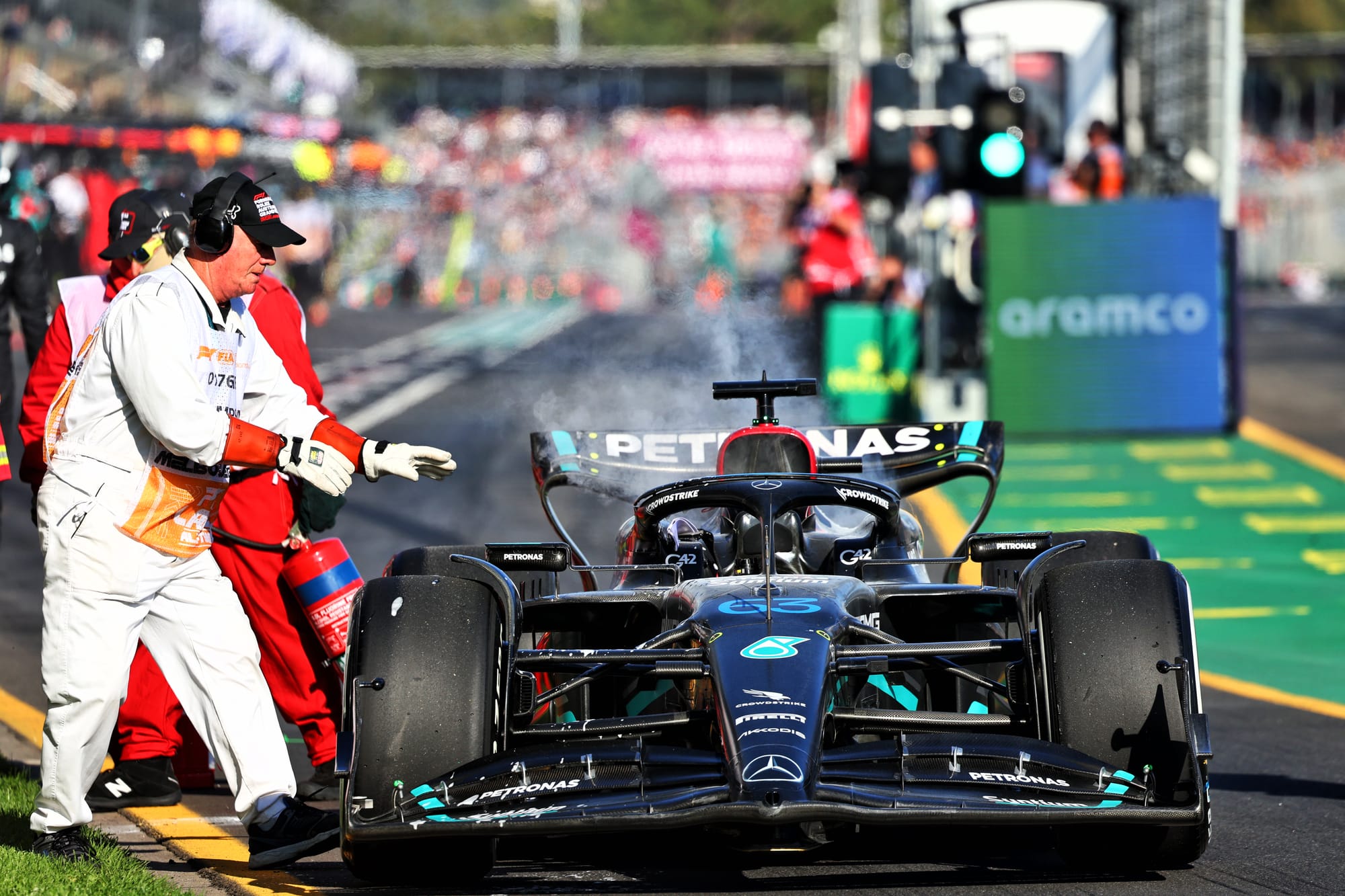
Russell felt that was a turning point.
“We probably started on the back foot after Melbourne,” said Russell at the end of the season. “If everything went our way I truly believe we could have won that race. That may just have transformed everything.”
A solid eighth followed in Azerbaijan, where Hamilton had the edge and Russell survived a controversial scrape with Max Verstappen in the sprint, before a strong Miami weekend where the Mercedes pendulum swung in his favour and he took fourth place.
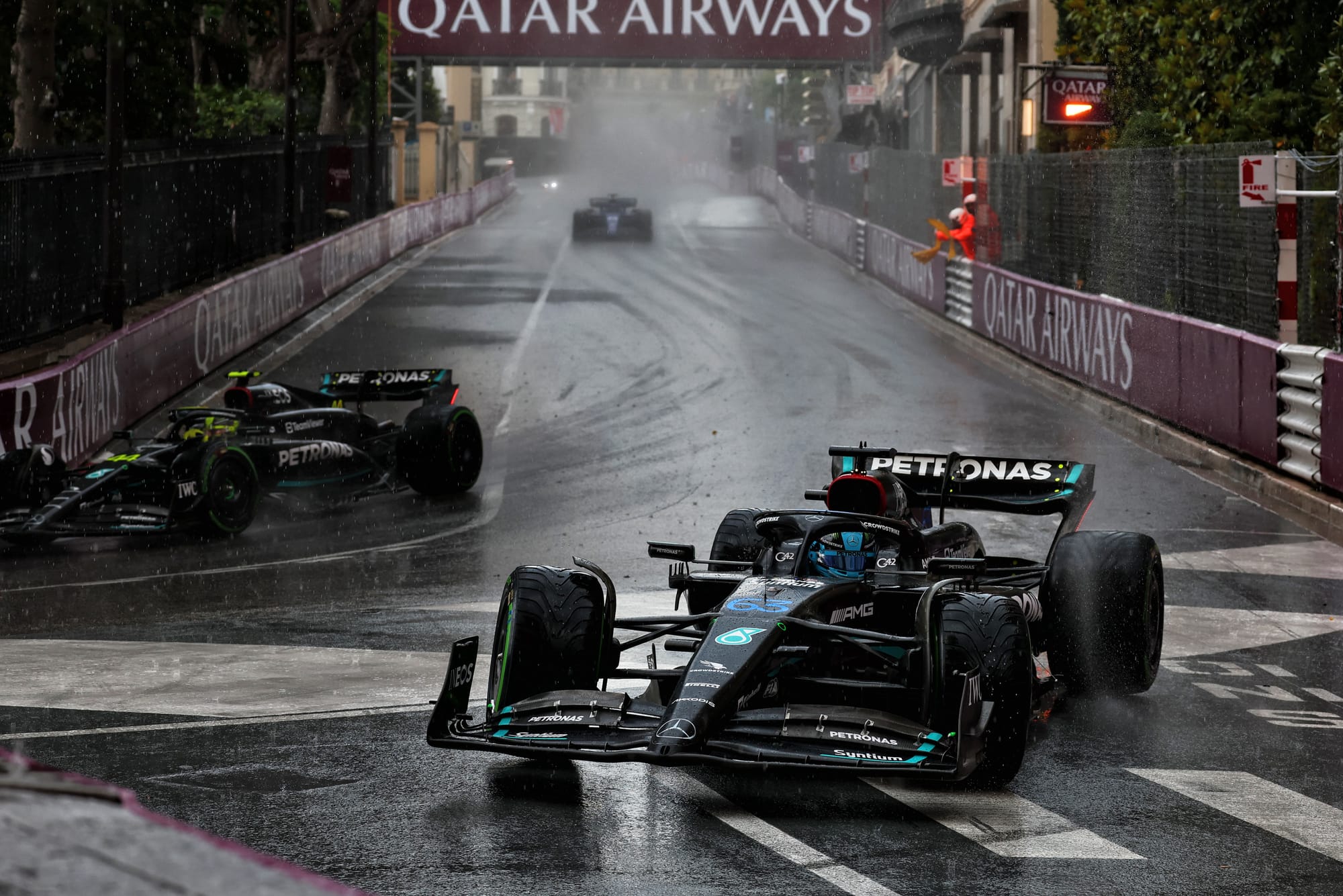
The sixth race of the season in Monaco was the first one in which a problem that stung Russell too many times reared its head. He lost a third place to a trip up the Mirabeau escape road after changing to intermediates and finished fifth. That was one of four significant in-race errors in 2023, and the least consequential of them.
A clash with Hamilton in Q2 in Spain, which the team took the blame for on the basis of a miscommunication that resulted in Russell initiating the contact, meant he started only 12th. But he recovered to third with what was probably his most impressive race drive of the year.
Then came the second big in-race error, hitting the wall during the Canadian Grand Prix while fourth and trying to catch Fernando Alonso. This one cost him more than the Monaco result and was a clear example of overreaching while trying to force the issue during a race stint.
After being the slower of the Mercedes drivers in Austria but banking points in both the sprint and grand prix, Russell had a dash of bad luck on a weekend of good performance at Silverstone, where the timing of the safety car meant he dropped behind Hamilton on his way to fifth.
That was followed by a disaster in qualifying in Hungary where chaos in the last corner led to his elimination in Q1 when everyone was forced to run on hards. His recovery drive to sixth was well-executed, but given Hamilton had taken the sole Mercedes pole position of the year it was a missed opportunity.
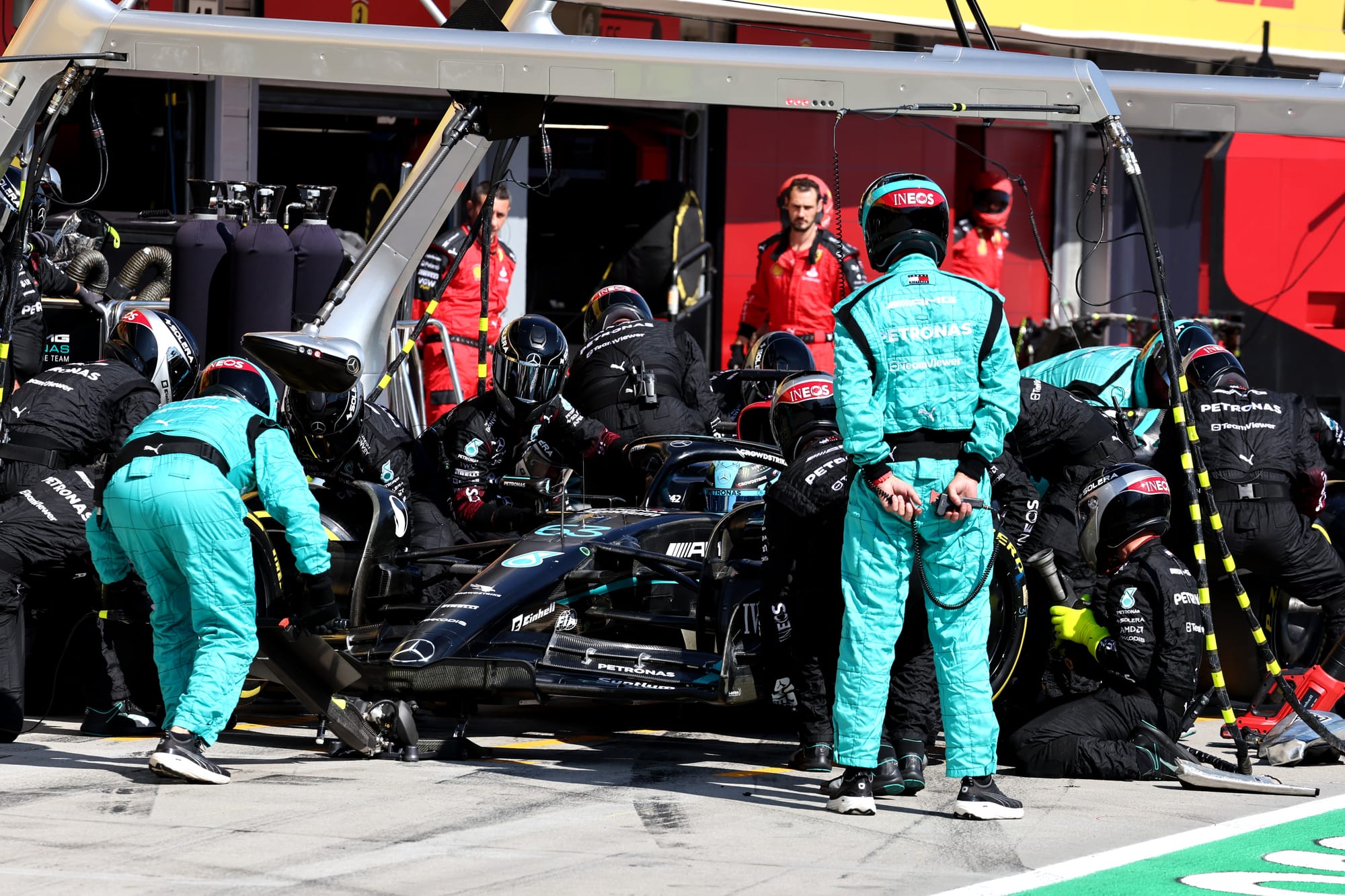
He rounded off the first half of the season with sixth in the wet at Spa on a weekend where his qualifying pace was poor but his race pace was strong. That weekend, he characterised the first half of the dozen-round opening spell of the season as positive and the second as more disappointing as Hamilton asserted himself more often.
The second half of the season started well, qualifying a superb third in Zandvoort but finishing 17th after staying out on slicks early then clashing with Lando Norris. He followed that up with fifth at Monza, meaning he was emphatically the stronger Mercedes driver on the first two weekends after the break.
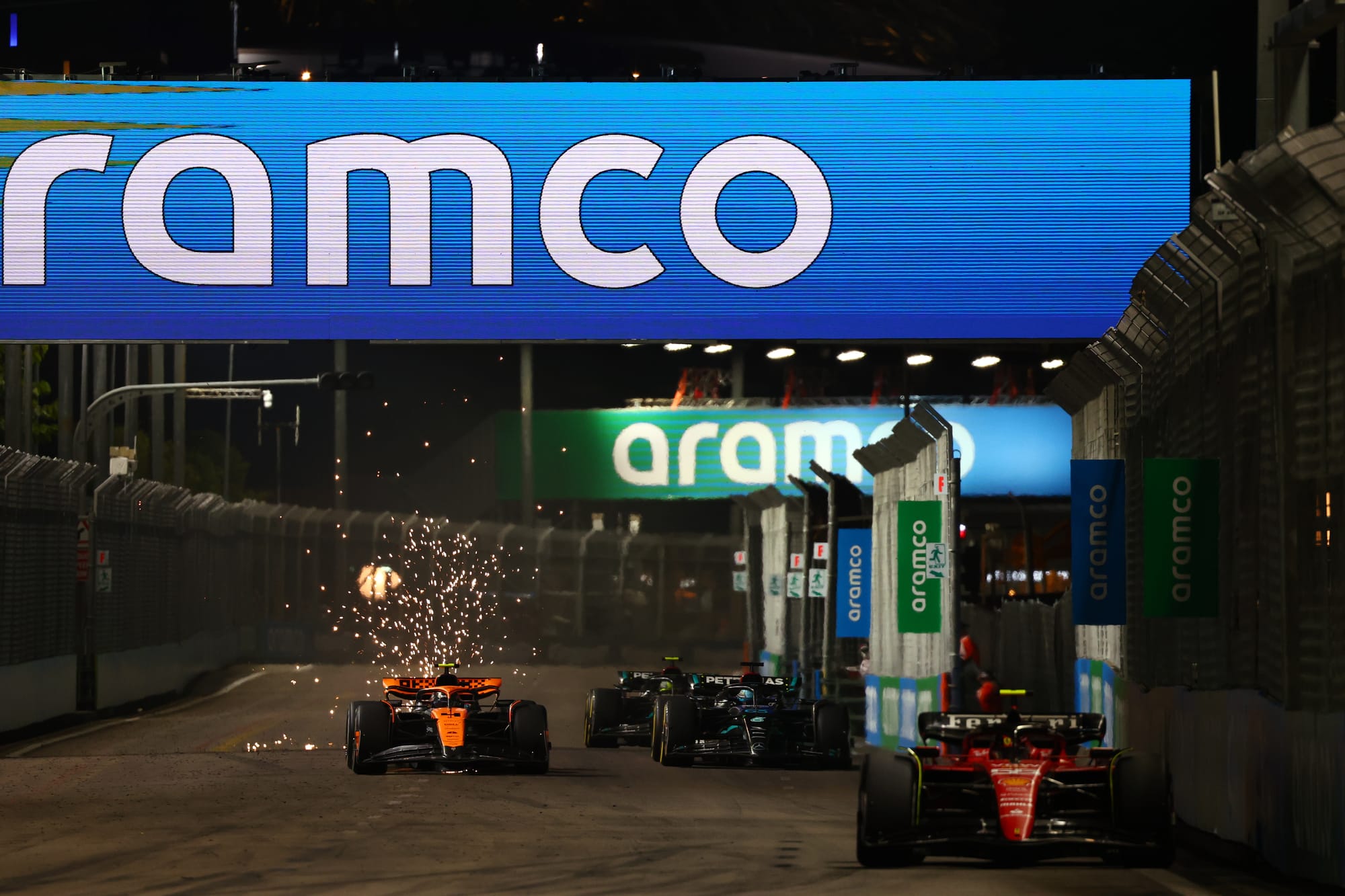
In Singapore, too, he was quicker than Hamilton in qualifying but crashed out - which he called "pathetic" - on the last lap of the race while chasing Norris for second.
That was the consequence of trying to pinch a little bit too much extra track on entry and clipping the wall. That was his third big in-race error of the year and came in a race where Hamilton appeared to have stronger pace in the closing stages.
That highlights a recurring trend in race stints between Hamilton and Russell, one that was showcased in their first race as team-mates in Bahrain last year.
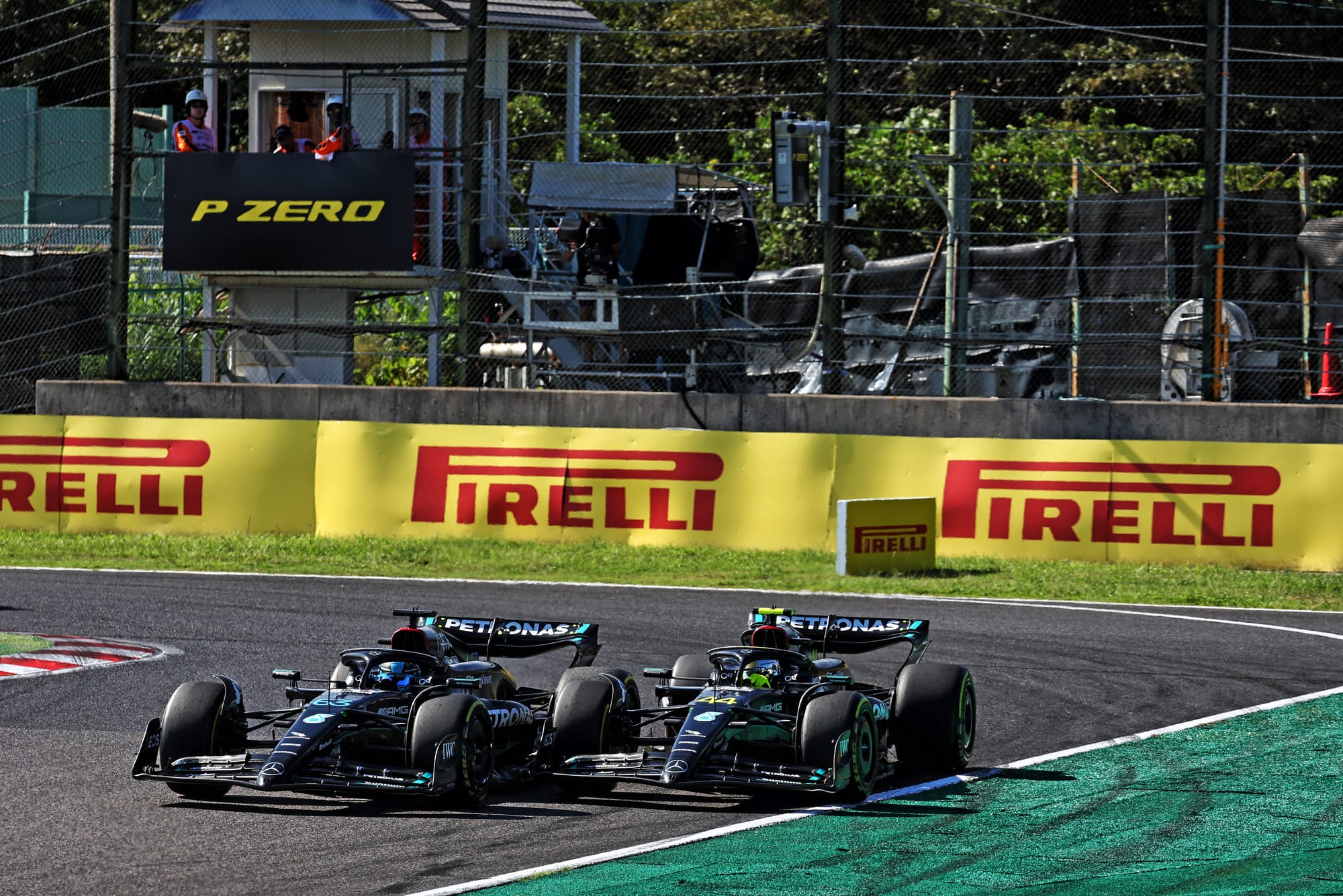
Hamilton is outstanding when it comes to tyre management and consistently in higher-deg races ensures he doesn’t take too much out of the tyres at the start of stints.
Then, with the most tread on the tyre there is greater movement and therefore you can shorten the life of the tyre by being too attacking. In Singapore, Russell was attacking from the start of the final stint and for good reason given a win was on the cards, although Hamilton appeared quicker later on.
At Suzuka, Russell was three tenths slower in qualifying but pressuring his team-mate in the race before gambling on a switch to a one-stopper that was well-executed but didn’t pay off. That was followed by a strong Qatar weekend where he outqualified Hamilton, survived being hit by his team-mate at the first corner, then recovered to fourth.
The USA/Mexico/Brazil triple header was a difficult one as he was emphatically not at Hamilton’s level at Austin, which Russell called his “bogey track”, or Mexico. Brazil was slightly better on a poor weekend for Mercedes one year after it won, particularly on the sprint day, but he retired with temperature concerns in the race.
He bounced back in Las Vegas, although he made his fourth major in-race error when he caused a clash with Verstappen when he turned in on the Red Bull. It was an honest mistake as Russell didn’t realise he was there, but ideally he should have been aware of the possibility. He finished fourth on the road but was relegated to eighth by the resulting five-second time penalty.
Despite battling illness, Russell finished on a high in Abu Dhabi by taking his second podium of the season in third place and outperforming Hamilton. That was only the fifth time he finished ahead of his team-mate in a grand prix in 2023 when both finished, with Hamilton doing so 12 times. On 64.5% of the racing laps they both competed, Hamilton was ahead.
That whistle-stop run through the season shows what a mixed bag it was for Russell. As he asserts, his outright performance was good in qualifying and the back-and-forth with Hamilton proves he was holding his own. But there were question marks over race day.
The four major errors stick out, with several of them perhaps representative of a driver grasping for perfection and paying the price for the resulting misjudgements. In that regard, the Mercedes roles were reversed from 2022 when Hamilton appeared to suffer from that and Russell was Mr Consistency.
There are still weaknesses relative to Hamilton to address, particularly on race day, but it’s reasonable for Russell to assert that bad luck played its part in his overall results being disappointing.
However, there were times when his race pace wasn't as convincing as his qualifying speed, while he also made too many errors. That’s something he needs to mitigate if he’s to fulfil his potential.
Perhaps there’s a lesson there, one that many drivers need to learn around this stage of their F1 careers, that perfection can sometimes be the enemy of the good. That’s particularly the case when lumbered with a tricky car that is prone to biting you, especially when you are up against a seven-time world champion team-mate.
And you can be certain that Russell will be doing everything he can to learn the lessons and turn that performance into more results next year in what he will hope is a more competitive car.


